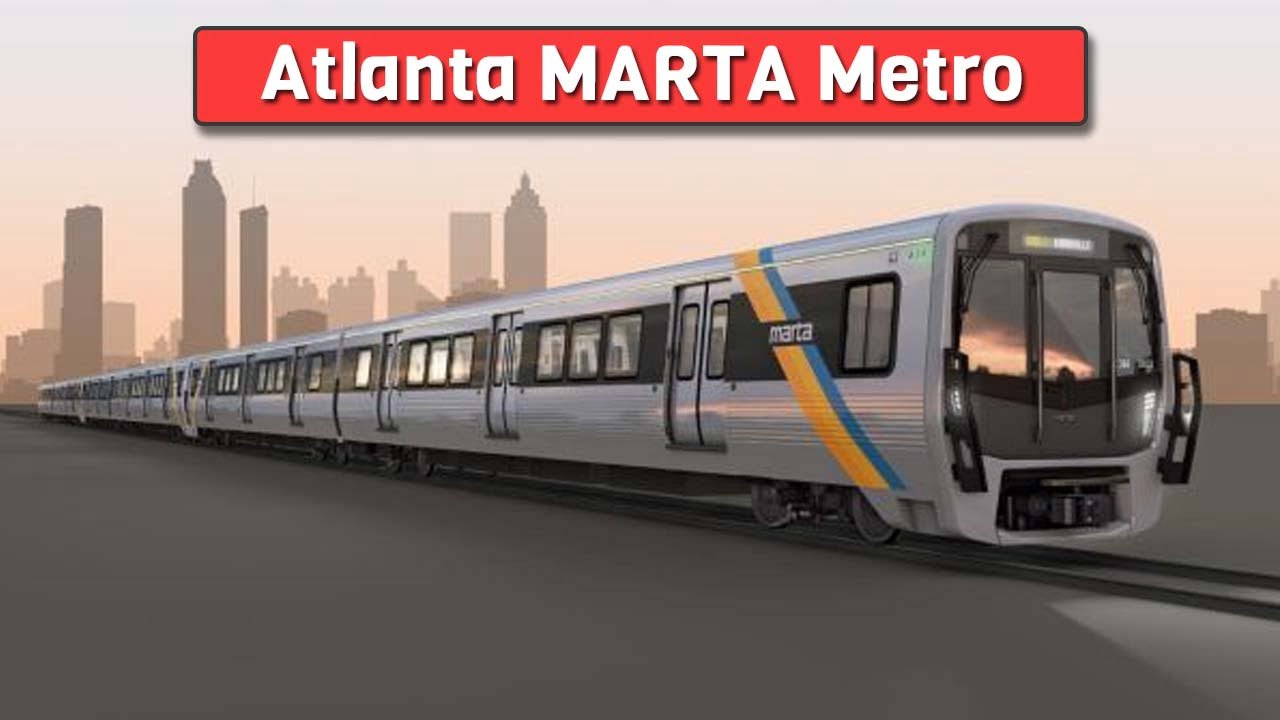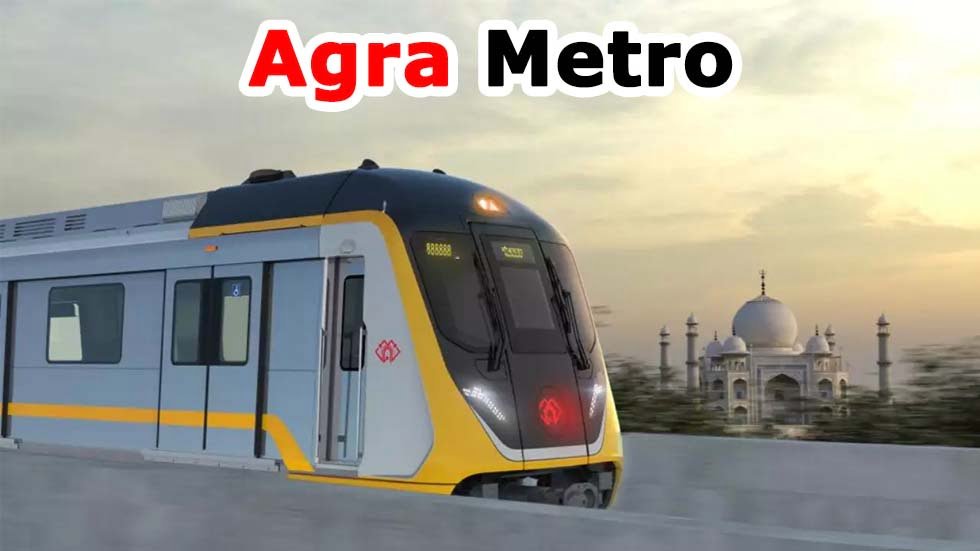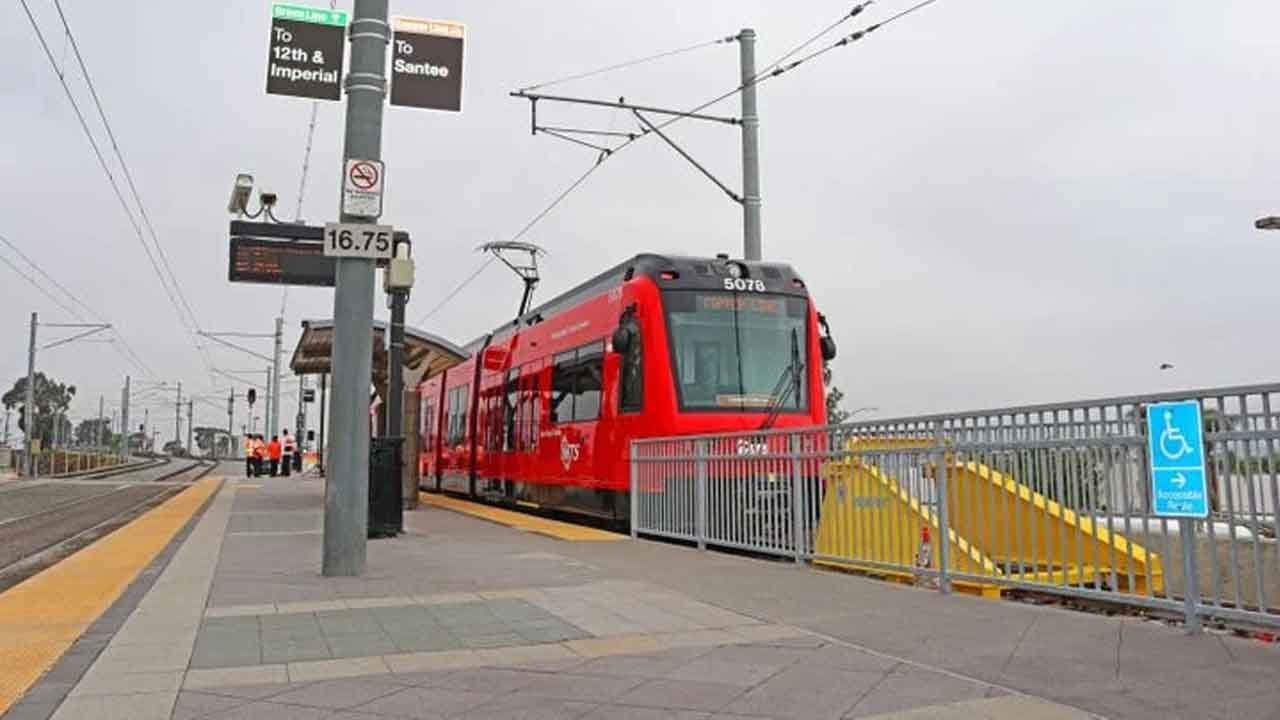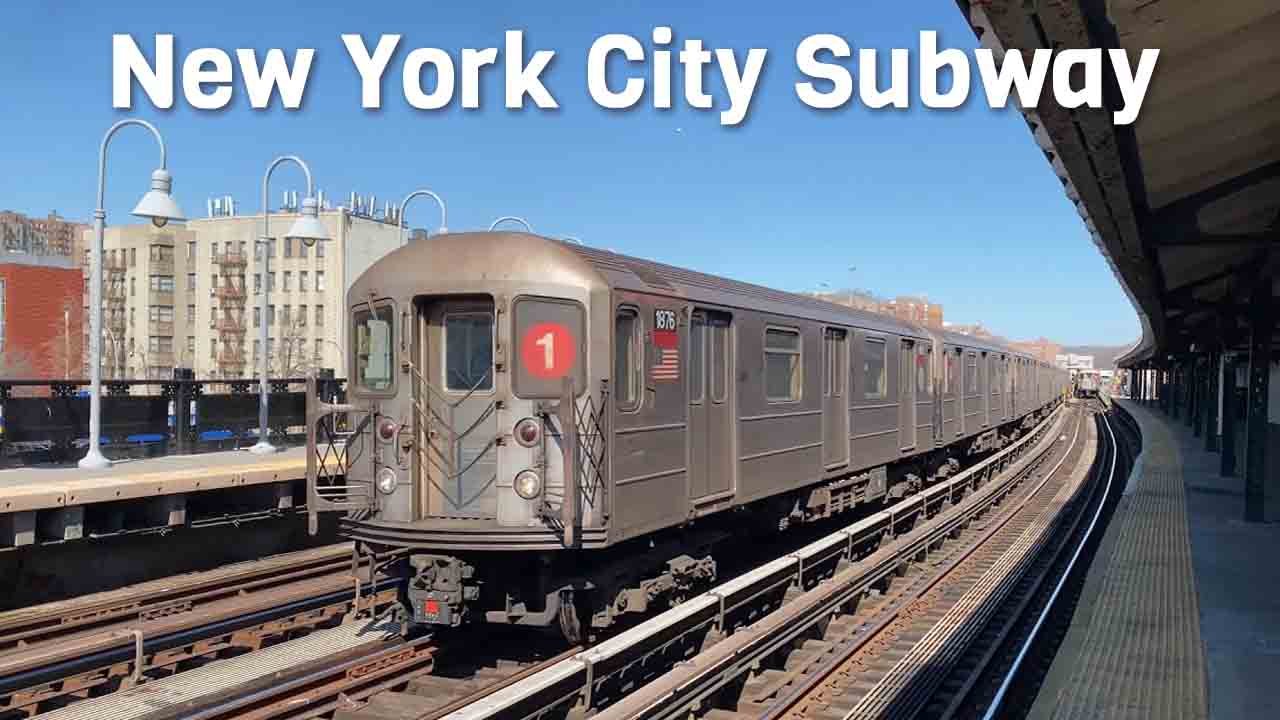The Mumbai–Ahmedabad high-speed rail corridor is a big project in India. It aims to link Mumbai and Ahmedabad with a High-Speed rail system, which will be part of India’s High-Speed Rail Corridor networks.
This project will change how we travel in India. The Mumbai–Ahmedabad high-speed rail route is 508 kilometers long with 12 stations.
The project will cost around ₹1.1 lakh crore. The Indian government and Japanese investor JICA will help to fund it.
Table of Contents
- 1 Project Overview
- 2 Project Route:
- 3 Key Takeaways
- 4 Route and Alignment Details
- 5 Mumbai–Ahmedabad High-Speed Rail Route Map
- 5.1 Station Design and Concept
- 5.2 1. Mumbai High-Speed Rail Station
- 5.3 2. Thane High-Speed Rail Station
- 5.4 3. Virar High-Speed Rail Station
- 5.5 4. Boisar High-Speed Rail Station
- 5.6 5. Vapi High-Speed Rail Station
- 5.7 6. Bilimora High-Speed Rail Station
- 5.8 7. Surat High-Speed Rail Station
- 5.9 8. Bharuch High-Speed Rail Station
- 5.10 9. Vadodara High-Speed Rail Station
- 5.11 10. Anand/Nadiad High-Speed Rail Station
- 5.12 11. Ahmedabad High-Speed Rail Station
- 5.13 12. Sabarmati High-Speed Rail Station
- 6 Mumbai–Ahmedabad High-Speed Rail Corridor
- 7 Technical Specifications and Design Features
- 8 Project Cost Analysis and Funding Structure
- 9 Construction Progress and Timeline
- 10 Expected Deadlines
- 11 Conclusion: Future of High-Speed Rail Transportation in India
- 12 FAQ
- 12.1 What is the Mumbai–Ahmedabad high-speed rail corridor?
- 12.2 What are the key features of the bullet train project?
- 12.3 What are the technical specifications of the high-speed rail technology?
- 12.4 What is the route map and alignment of the Mumbai–Ahmedabad high-speed rail corridor?
- 12.5 What are the station’s architecture and facilities?
- 12.6 What is the project cost and funding structure?
- 12.7 What is the current construction progress and timeline?
- 12.8 What are the environmental impact and sustainability measures?
Project Overview
- Length: 508.17 km
- Stations: 12
- Cost: ₹1.1 lakh crore
- Operating speed: 320 km/h (200 mph)
- Operator: National High-Speed Rail Corporation Limited
- Owner: Indian Railways
- Completion Time: 2026 (Surat to Bilimora), 2028 (Total Section)
Project Route:
- States: Gujarat – 348 km, Maharashtra – 156 km
- UT: Dadra and Nagar Haveli – 4 km
- Elevated: 468 km
- Underground: 27 km (2 km under sea at Thane Creek)
- At-Grade: 13 km
Key Takeaways
- The Mumbai–Ahmedabad high-speed rail corridor will connect Mumbai and Ahmedabad with a high-speed rail link.
- The project will span approximately 508 kilometers with 12 stations along the route.
- The estimated cost of the project is around ₹1.1 lakh crore.
- The project will be funded by the Indian government and Japanese investors JICA.
- The high-speed rail corridor will reduce travel time and increase economic growth.
- The project is a part of India’s high-speed rail network and will be a bullet train project.
- The Mumbai–Ahmedabad high-speed rail corridor will boost India’s infrastructure and Economic growth.
Route and Alignment Details
The Mumbai–Ahmedabad high-speed rail corridor will be about 508 kilometers long. It will go through Maharashtra, Gujarat, Dadra and Nagar Haveli, and Daman and Diu.
It will pass through Mumbai, Thane, and Palghar districts in Maharashtra and eight districts in Gujarat: Valsad, Navsari, Surat, Bharuch, Vadodara, Anand, Kheda, and Ahmedabad.
The route will have 12 stations.
Maharashtra:
- Mumbai (Bandra Kurla Complex – BKC) 2. Thane 3. Virar 4. Boisar
Gujarat:
5. Vapi 6. Bilimora 7. Surat 8. Bharuch 9. Vadodara 10. Anand 11. Ahmedabad 12. Sabarmati
To get past rivers, hills, and cities, bridges, tunnels, and viaducts will be built. The part in Maharashtra will be about 156 kilometers. The part in Gujarat will be around 348 kilometers, and 4 kilometers in Dadra Nagar Haveli.
Mumbai–Ahmedabad High-Speed Rail Route Map

Station Design and Concept
1. Mumbai High-Speed Rail Station

- No. of Platforms: 6
- No. of Lines: 6
- Station Theme: Arabian Sea
2. Thane High-Speed Rail Station

- No. of Platforms: 4
- No. of Lines: 4
- Station Theme: River Waves
3. Virar High-Speed Rail Station

- No. of Platforms: 2
- No. of Lines: 4
- Station Theme: Hilly area, Winds from the mountains
4. Boisar High-Speed Rail Station

- No. of Platforms: 3
- No. of Lines: 5
- Station Theme: Fishing Heritage of Boisar
5. Vapi High-Speed Rail Station

- No. of Platforms: 2
- No. of Lines: 4
- Station Theme: Industrial Pace, symbolize speed and efficiency
6. Bilimora High-Speed Rail Station

- No. of Platforms: 2
- No. of Lines: 4
- Station Theme: Mango Orchards
7. Surat High-Speed Rail Station

- No. of Platforms: 4
- No. of Lines: 4
- Station Theme: Diamond
8. Bharuch High-Speed Rail Station

- No. of Platforms: 3
- No. of Lines: 5
- Station Theme: Bharuch’s 150-year-old cotton weaving heritage
9. Vadodara High-Speed Rail Station

- No. of Platforms: 4
- No. of Lines: 4
- Station Theme: Banyan Tree
10. Anand/Nadiad High-Speed Rail Station

- No. of Platforms: 2
- No. of Lines: 4
- Station Theme: Milk City of India, Milk Droplets
11. Ahmedabad High-Speed Rail Station

- No. of Platforms: 2
- No. of Lines: 2
- Station Theme: Colorful Kites, Rich culture and heritage
12. Sabarmati High-Speed Rail Station

- No. of Platforms: 4
- No. of Lines: 4
- Station Theme: Sabarmati River and Gandhi’s charkha
Mumbai–Ahmedabad High-Speed Rail Corridor
The Mumbai to Ahmedabad rail corridor is a big project in India. It aims to cut travel time between the cities to less than 2 hours. This project is part of India’s plan to better its rail system.
This project wants to make a fast rail link. It will help the economy grow and make travel better. The Mumbai–Ahmedabad high-speed rail will use the latest bullet train tech. This will let trains go up to 320 kilometers per hour.
Project Background and Vision
The idea for this project started in 2013. Since then, a lot of work has been done. The rail corridor needs new tracks, stations, and bridges.
Key Features of the Bullet Train Project
Some important parts of the project are:
- Advanced bullet train technology
- Trains can go up to 320 kilometers per hour
- Travel time between Mumbai and Ahmedabad will be less than 2 hours
Technical Specifications and Design Features
The Indian railways are moving fast with new high-speed rail tech. The Mumbai–Ahmedabad high-speed rail corridor is a big step. Trains will go up to 320 kilometers per hour.
This speed is thanks to top-notch signaling and communication. It makes the trains run safely and smoothly.
Some key features of the project include:
- Maximum acceleration of 2.5 kilometers per hour per second
- Advanced signaling and communication systems
- Modern and sleek train design, prioritizing passenger comfort and convenience
The high-speed rail technology shows India’s drive for innovation. As the Indian railways grow, we’ll see more projects like this. This will make India a leader in high-speed rail.
The project focuses on safety, efficiency, and comfort. This is thanks to the Indian Railways’ commitment to excellent service. With high-speed rail technology, the Mumbai–Ahmedabad corridor will raise the bar for transport in India. The Indian railways are leading this change.
| Feature | Description |
|---|---|
| Speed | Up to 320 kilometers per hour |
| Acceleration | 2.5 kilometers per hour per second |
| Signaling and Communication | Advanced systems for safe and efficient operation |
Project Cost Analysis and Funding Structure
The project is estimated to cost ₹1.1 lakh crore ($13 billion), including 24 trainsets, interest during construction, and import duties. In 2017, JICA agreed to finance 81% of the project, i.e., ₹88,087 crore (equivalent to ₹1.2 trillion or US$14 billion in 2023).
The project will be completed through a 1.5 trillion Japanese yen loan for 50 years at an interest rate of 0.1% with a moratorium on repayment for 15 years. The remaining cost will be borne by the Maharashtra and Gujarat governments. Twenty percent of the components used in the corridor will be imported from Japan, while the rest will be manufactured in India.
Construction Progress and Timeline
The Mumbai–Ahmedabad high-speed rail corridor is being built. A lot of construction progress has been made. The project timeline is to finish by 2028.
The first part of the corridor should open by 2026. The Indian railways project has hit some bumps. But the government and contractors are pushing to meet deadlines and stay within budget.
They’ve hit big milestones. For example, they’ve finished geological surveys and started laying tracks.
Expected Deadlines
The project’s end dates are set as follows:
- 2027: First phase, Surat to Bilimora, is expected to be operational
- 2029: Project expected to be completed
Conclusion: Future of High-Speed Rail Transportation in India
The Mumbai-Ahmedabad high-speed rail corridor is a big step for India’s transport. It will change how people travel in the country. It will be fast, efficient, and comfy.
This project’s success will open the door for more high-speed rail lines in India. It will change the country’s transport and help it grow in a green way.
The Mumbai-Ahmedabad high-speed rail is almost done. It will make India’s transport future look bright. It will use new tech and care for the environment.
This project will bring jobs and help businesses grow. It will make the area more connected and prosperous.
When this project is finished, it will show India’s dedication to better transport. It will use new tech and care for the planet.
India will become more efficient and green. People and goods will move more easily. This will make the country richer and better for everyone.
FAQ
What is the Mumbai–Ahmedabad high-speed rail corridor?
The Mumbai–Ahmedabad high-speed rail corridor is a big project in India. It aims to link Mumbai and Ahmedabad with a fast train. This project will change how we travel, making it faster and boosting the economy.
What are the key features of the bullet train project?
The project uses the latest bullet train tech. Trains will go up to 320 kilometers per hour. It also needs new tracks, stations, and bridges for the infrastructure.
What are the technical specifications of the high-speed rail technology?
The trains will go up to 320 kilometers per hour. They can speed up to 2.5 kilometers per second. The project also has advanced systems for safe and smooth travel.
What is the route map and alignment of the Mumbai–Ahmedabad high-speed rail corridor?
The corridor will be about 508 kilometers long. It goes through Maharashtra and Gujarat. There will be 12 stations, mostly in Gujarat. The project needs detailed surveys to find and solve challenges.
What are the station’s architecture and facilities?
The stations will be modern and comfortable for passengers. They will have air-conditioned areas, food, and easy ticketing. It’s all about a good travel experience.
What is the project cost and funding structure?
The project costs about $14.5 billion. The Indian government and Japanese investor JICA have funded it. The cost will be split between Maharashtra and Gujarat based on the corridor’s length in each state.
What is the current construction progress and timeline?
The project is being built now, with good progress. It’s set to finish by 2028. The first part will open in 2026.
What are the environmental impact and sustainability measures?
The project aims to be green and use less energy. It will use tech like regenerative braking and solar power. This helps reduce its environmental footprint.










